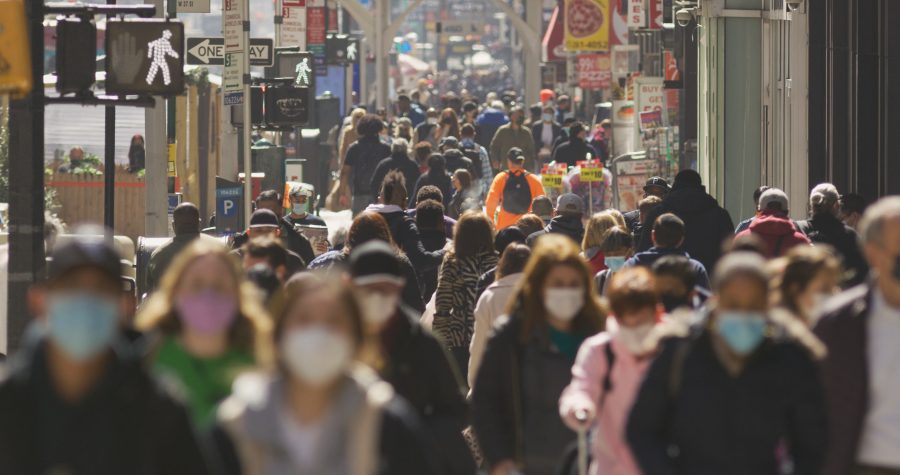Formulated in “The People’s Choice” by Paul Lazarfeld, the Two-Step Flow theory discusses how mass media is passed down through opinion leaders to less active media consumers (Postelnicu, 2016). Opinion leaders digest, interpret, and explain information in a way that is easier for these consumers to understand (Katz, Lazarsfeld, Roper, 2006); however, it also allows them to manipulate the information given, and therefore, public opinions, since the ideas and thoughts provided by opinion leaders are often passed on to less active media consumers. There is an established sense of trust and understanding, whether it comes from an expert or a well-educated family member. This theory emphasises the importance of considering the interpersonal relationships that convey information from mass media, regardless of whether the recipient is directly exposed to the original message or not (Soffer, 2019).
The Two-Step Flow theory can be visualised in a modern, contemporary sense, for example, during the COVID-19 outbreak. The United Kingdom government has released numerous reports surrounding the disease (HM Government, 2021), serving as a primary source of information for the mass media, which includes statistics, details, and explanations of how COVID-19 is impacting the country, such as highlighting health inequalities during the outbreak (HM Government, 2021). Therefore, sources such as the NHS, scientific experts, and medical professionals served as opinion leaders to the wider public, gathering information from official health advice, government announcements, studies, and media coverage in newspapers and on television. Each social group then had an opinion leader (for example, a faith or community leader, or a family member/friend) who would share this information with a less active media consumer in a way that was easier to digest, such as through community events, social media posts, and personal conversations.

As the opinion leader shares messages, they shape consumers’ attitudes surrounding COVID-19, whether that is reducing concerns and hesitancy or influencing opinions about the outbreak. This was especially common amongst ethnic minorities, who were found to have high feelings of mistrust and doubt, especially surrounding vaccines, fearing misinformation or having pre-conceived negative attitudes towards the media. Information sources, such as friends and family, culture and religion, or social media, were the most common opinion leaders for specific ethnic groups, and therefore the greatest influences on media consumer opinions. Therefore, large disparities were found surrounding ideas related to the COVID-19 vaccine. For example, a report by the UK Health Security Agency found that all Jewish focus group participants intended to accept the vaccine, while Traveller participants would not (Sides et al, 2022). Similarly, 46% of 16-34-year-olds stated that “they had seen or heard messages discouraging the public from getting a coronavirus vaccine” (Duffy, 2020), which reflects how opinion leaders on social media can manipulate information.
The Two-Step Flow theory remains highly relevant in contemporary media, as mass media information is disseminated by opinion leaders to less active media consumers. These leaders can shape and morph ideas and attitudes, leading to different public opinions regarding to specific topics, such as the COVID-19 vaccine.
References:
blvdone. (no date) Anonymous crowd of people walking street wearing masks during Covid 19 pandemic in New York City. Available at: https://stock.adobe.com/uk/search/images?k=covid+19&search_type=usertyped&asset_id=422811649 (Accessed: 16/10/25).
Duffy, B. (2020) Coronavirus: vaccine misinformation and the role of social media. King’s College London. (Accessed: 15/10/25).
Flamingo Images. (no date) Smiling African doctor standing in a hospital with his staff. Available at: https://stock.adobe.com/uk/search/images?filters%5Bcontent_type%3Aphoto%5D=1&filters%5Bcontent_type%3Aillustration%5D=1&filters%5Bcontent_type%3Azip_vector%5D=1&filters%5Bcontent_type%3Avideo%5D=0&filters%5Bcontent_type%3Atemplate%5D=0&filters%5Bcontent_type%3A3d%5D=0&filters%5Bcontent_type%3Aaudio%5D=0&filters%5Bfetch_excluded_assets%5D=1&filters%5Binclude_stock_enterprise%5D=1&filters%5Bis_editorial%5D=0&filters%5Bfree_collection%5D=0&filters%5Bcontent_type%3Aimage%5D=1&k=doctor&order=relevance&price%5B%24%5D=1&search_page=1&search_type=usertyped&acp=&aco=doctor&get_facets=0&asset_id=228931443 (Accessed: 16/10/25).
HM Government (2021) Final Report on Progress to Address COVID-19 Health Inequalities. Available at: https://www.gov.uk/government/publications/final-report-on-progress-to-address-covid-19-health-inequalities/final-report-on-progress-to-address-covid-19-health-inequalities (Accessed: 16/10/25).
Katz, E., Lazarsfeld, P., and Roper, E. (2006) Personal Influence. Routledge. (Accessed: 16/10/25)
Postelnicu, M. (2016) Two-step Flow Model of Communication. Available at: https://www.britannica.com/topic/two-step-flow-model-of-communication (Accessed: 16/10/25).
Sides, E. et al. (2022) Attitudes towards coronavirus (COVID-19) vaccine and sources of information across diverse ethnic groups in the UK: A qualitative study from June to October 2020. Reference number (if available). Available at: https://doi.org/10.1136/bmjopen-2022-060992 (Accessed: 16/10/25).
Soffer, O. (2019) ‘Algorithmic Personalization and the Two-Step Flow of Communication’, Communication Theory, Volume 31, Issue 3, pp. 297-315. Available at: https://doi-org.uow.idm.oclc.org/10.1093/ct/qtz008 (Accessed: 16/10/25)


A clear explanation of two step flow theory practice in modern world and well references can be seen from this blog. But I want to give some suggestions, there exists some drawbacks of two step flow theory. In modern world, we don’t see communication theory as the magic bullet theory, which means not the mass media only have strong power, audience just like being hit by bullet and can’t resist. Audience becomes user nowadays, information isn’t flow in one direction, user’s response can also influence the way how opinion leaders encode information. More things can be considered, how COVID-19 influence the users not only depends on the opinion leaders, but also depends on many other factors.
This post effectively applies the Two-Step Flow Theory to the COVID-19 pandemic. You explained well how information from official government and health sources was interpreted and re-shared by opinion leaders before reaching the wider public, mirroring Lazarsfeld and Katz’s description of the communication process. The examples you included, particularly regarding ethnic minority communities and vaccine hesitancy, demonstrate how opinion leaders can significantly influence attitudes, either positively or negatively.
I found your point about trust particularly important. The notion that people relied more on community figures, family members, or social media voices than on direct government messaging explains why some groups were more receptive to public health guidance. Your use of data to illustrate how attitudes varied across groups effectively demonstrated the influence of these secondary sources during the pandemic.
The post convincingly argues for the enduring relevance of the Two-Step Flow Theory. It clearly illustrates how interpersonal communication, social media, and trusted intermediaries played a crucial role in shaping public understanding and behaviour during COVID-19, surpassing the impact of official announcements alone.